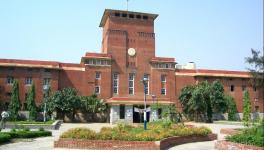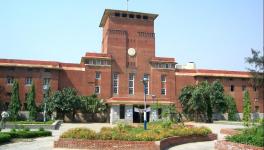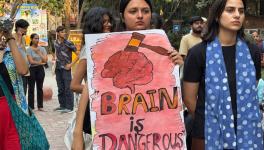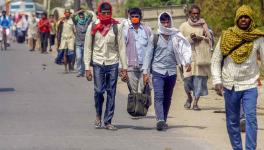Life After Covid-19: A Society of Empaths or More Socially Distant?
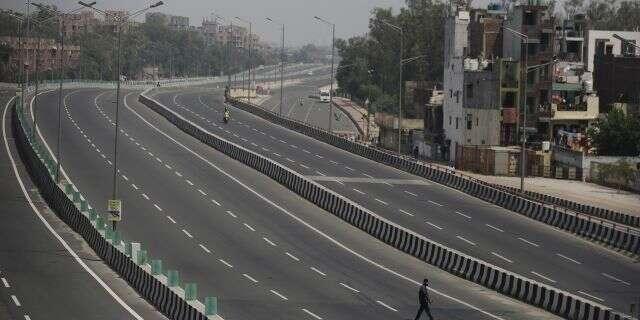
While the world projects the number of deaths, how to flatten the curve and how to slow the spread of the Covid-19 pandemic, new official terms confront us today, each being made more familiar through newspapers and social media. Social distancing is one such term and let us see how we can understand its meaning through the advisory of the government of India.
Distancing: at home and the workplace
The WHO website promotes ‘maintain social distancing’, which means the need to maintain at least 1 metre (3 feet) distance between yourself and anyone who is coughing or sneezing.
On 16 March, the Union Ministry of Health and Family Welfare issued an advisory on social distancing in view of the spread of Covid-19. This starts with defining social distancing as “a non-pharmaceutical infection prevention and control intervention implemented to avoid/decrease contact between those who are infected with a disease causing pathogen and those who are not, so as to stop or slow down the rate and extent of disease transmission in a community. This eventually leads to decrease in spread, morbidity and mortality due to the disease.’
Closure of schools, regulations on mass gathering, ensuring physical distancing of minimum 1 metre between tables in restaurants, postponement of examinations, avoidance of non essential travel—have been prescribed in this advisory.
It is interesting to note that what the WHO is calling social distancing—maintain 1 metre distance between anyone who is coughing or sneezing; is translated by MoHFW as physical distancing and the qualifier of people who are coughing or sneezing is missing. Since there is already a commonsensical understanding of social distance that is prevalent in India between various groups of people, that may have necessitated the reason for another term—‘physical distancing’—coming into the MoHFW advisory, which is otherwise not there in the WHO texts. The Indian government directive seems to be addressing schools, colleges—the student community as the primary/priority target group—followed by private sector employees.
The advisory says that students should stay at home and online education to be promoted. This has lead to immediate hostel evacuation policies in various higher educational institutions. Clearly, all students do not stay at home for purposes of education and there is nothing worked out for how soon hostels need to be vacated during this public health emergency and whether educational institutions have any responsibility to create interim measures and ensure a safe passage back home for students.
In fact, a 19 March a central government higher education institution said in a press release, “hostellers are directed to leave for their hometowns at the earliest for their own safety. International students may take decision in their best interest’. This is a complex situation of clearing hostels to ensure social distancing, but at the same time promoting travel to hometowns (before or after lockdown) which need not guarantee physical distancing.
However, a broader kinship question to raise is that in times like these, it is being presumed that the home emerges as the safest site. Students may not necessarily feel that home is the ideal site to return to or be in—especially if the home is an abusive place. One is also left wondering what paying guest accommodation owners would do in these situations, given that there cannot be government directives on them and yet, many students in metropolis live in these arrangements. It can lead to increased arbitrary behaviour on the part of the owners and precarity for the students.
A similar conflicting situation has arisen after the announcement of the countrywide lockdown on 24 March. Thousands of migrant labourers have been seen crowding the bus terminus in Delhi-Uttar Pradesh borders. Migrant families have walked for unimaginable distances to reach their ‘homes’.
There is no work left for them in their city of livelihood and there was no prior announcement by the government of any mandatory relief rations to be given to migrant families so that they can remain where they are and not travel. Travelling in crowded buses, walking for long distances are clearly counter-productive to physical distancing, which the government’s own advisory is proposing. This leaves us wondering—whom is social/physical distancing meant for?
If the home has emerged as the site to remain at or, in panic, to go back to, what about the homeless?
The emphasis on promoting online education at this juncture makes one wonder whether all government schools, colleges and universities have adequate infrastructural conditions to support it. More importantly whether most students have those facilities at home—where they are expected to be—to avail that education? A more foundational question is whether courses that have always been transacted in a face-to-face mode can suddenly become suitable to conduct online? Are all teachers trained to do that?
However, it is also important to acknowledge that in times of prescribed social distancing, making efforts towards online teaching/interaction could be the only way to socially connect with students. There is a need to remember the diversity of the classroom and differential access to online platforms while taking this step. It can only be an interim measure, primarily to connect from a distance rather than become a mandatory tool of teaching itself.
Work-from-home, like large-scale online education, is really quite an alien concept in India, outside of the corporate or media world—that too for officers with a certain higher ranking. This is because physical surveillance and control are important modes through which everyday work culture functions in most public and private sector workplaces. Also, becoming paperless and making all decisions through email are not a part of the public institutional culture in India.
Does a public health crisis promoting social distancing become the basis of transformed office practices for the future? It is important to note that while through the social distancing advisory the GoI was asking private companies to work from home, it still kept its own offices open, with a 50% attendance advisory before the lockdown.
The emerging social
How does one practice social distancing and not social distance (even the Wikipedia entry on the latter specifically distinguishes the term)? The hierarchical social distance and stigma practices that exist on the basis of caste, gender, disability, race in India—how are they strengthened as a result of the government advisory on social distancing? Does social distancing legitimise new forms of distances to the already existing ones?
In some housing societies, helps and ayahs have been prevented from entering the premises. Whereas it is those with foreign travel histories who are possible carriers of the virus, yet, the suspicion and discomfort was immediately directed to the poor. Interestingly, after the lockdown was announced, residents of these housing societies also worried about whether domestic workers have to follow stay-at-home rules? ‘Who will do everyday household work’ was a concern in middle and upper-class households.
It is actually an important question for households where only senior citizens reside, who are dependent on informal paid domestic help for their survival. Is this public health crisis a juncture to remind ourselves of the importance of neighbours, who could help with cooking for other homes? Also, this is a moment to realise how strongly the middle and upper middle class is dependent on domestic help—and the need, therefore, to standardise wages, leave and other benefits for them.
In the last few days, many residents of various neighbourhoods are trying to assist their domestic workers by not deducting their salaries for the period that they will not come, and also with rations. While these are very important acts of solidarity-building across classes, yet one definitely is looking forward to a structured distribution of food and basic necessities to many kinds of workers.
At the end of all this, will we emerge a society who will connect with and empathise with more people, or become more socially distant—that remains to be seen.
The author is professor of sociology, School of Liberal Studies, Ambedkar University, Delhi. The views are personal.
Get the latest reports & analysis with people's perspective on Protests, movements & deep analytical videos, discussions of the current affairs in your Telegram app. Subscribe to NewsClick's Telegram channel & get Real-Time updates on stories, as they get published on our website.











